Sustainable Website Design 2025: A Comprehensive Guide for a Green Future

Learn about sustainable website design (Green Web Design) in 2025. Detailed guide on methods, tools, benefits, and how to optimize an environmentally friendly website.
Sustainable Web Design: Towards a Future in 2025

In the ever-evolving digital age, web design is no longer limited to aesthetics and user experience but also extends to sustainability. Sustainable web design is not just a passing trend but a vital necessity to minimize negative environmental impacts and build a greener digital future. Let's delve deeper into this topic with Vinawebapp.com – a professional web design company in Da Nang, Vietnam.
What is Sustainable Web Design?
Sustainable Web Design is a comprehensive approach focused on minimizing the negative environmental impact of a website throughout its lifecycle. This includes design, development, hosting, and even the decommissioning of the website. The primary goal is to reduce carbon emissions, conserve energy and resources, and ensure the best possible user experience.
Why is Sustainable Web Design Important?
The internet consumes a tremendous amount of energy, mainly from data centers and user devices. This energy is often generated from fossil fuels, contributing to climate change and environmental pollution. Sustainable web design helps alleviate this burden by:
- Reducing data transfer
- Optimizing website performance
- Using renewable energy
- Extending device lifespan
In addition, sustainable web design offers other benefits such as:
- Energy cost savings: A more efficient website will consume less energy, reducing electricity bills for businesses.
- Enhanced brand reputation: Companies that care about the environment are more highly valued by customers.
- Improved SEO: Google values websites with fast loading speeds and good user experiences.
Fundamental Principles of Sustainable Web Design
To design a sustainable website, you need to adhere to the following principles:
- Use WebP and AVIF Images: WebP and AVIF are modern image formats that offer better compression than JPEG and PNG, reducing file sizes and page loading times.
- Optimize Code: Remove redundant code, use code compression techniques (minification), and optimize algorithms to reduce file size and speed up processing.
- Choose Green Hosting: Use hosting providers that use renewable energy or have measures in place to minimize environmental impact.
- Minimize JavaScript: JavaScript can slow down page loading speeds and consume a lot of energy. Limit the use of JavaScript when it is not necessary and optimize JavaScript code.
- Use a CDN (Content Delivery Network): CDNs help distribute website content to users from the nearest servers, reducing latency and saving bandwidth.
Tools and Resources to Measure and Improve Website Sustainability
There are many tools and resources available to help you measure and improve the sustainability of your website:
- PageSpeed Insights: Google's tool helps assess website performance and provide suggestions for improvement.
- GTmetrix: Similar to PageSpeed Insights, GTmetrix provides detailed information on website performance and issues that need to be addressed.
- EcoGrader: This tool assesses the environmental impact of a website based on carbon emissions.
In addition, you can refer to documents and guides from organizations specializing in sustainable web design such as:
- The Green Web Foundation
- Website Carbon Calculator
Case Study: Websites That Have Successfully Implemented Sustainable Design
Some websites have successfully implemented sustainable design and achieved impressive results:
- The Green Web Foundation: This organization's website is designed with a simple interface, using optimized images and green hosting.
- Patagonia: This retail website focuses on user experience and reduces data transfer by using high-quality but optimized images and videos.
The Impact of Sustainable Web Design on SEO and User Experience
Sustainable web design is not only good for the environment but also benefits SEO and user experience:
- Improve SEO: Google values websites with fast loading speeds, mobile-friendliness, and quality content. Sustainable web design helps meet these criteria, thereby improving Google rankings.
- Enhance User Experience: A website that loads quickly and runs smoothly will provide a better experience for users, helping to increase conversion rates and reduce bounce rates.
Sustainable Web Design Trends in 2025
In 2025, sustainable web design will continue to evolve and become an important factor in the development strategies of businesses. Some key trends include:
- Prioritize minimalist design: Simple interface, few decorative elements, and focus on core content.
- Use energy-saving colors: Dark colors generally consume less energy than light colors.
- Apply Serverless technology: Serverless computing helps minimize resource waste by only using resources when needed.
How to Choose Green Hosting and Optimize Energy Usage for Your Website
To choose green hosting, you need to learn about the policies and commitments of the provider regarding renewable energy and environmental protection. Some reputable green hosting providers include:
- GreenGeeks
- A2 Hosting
- DreamHost
To optimize energy use for your website, you can take the following measures:
- Turn off unnecessary plugins: Plugins can slow down the website and consume a lot of energy.
- Optimize the database: Large and complex databases can slow down the website.
- Use caching: Caching helps store static versions of the website, reducing the load on the server.
The Economic Benefits of Sustainable Web Design
Sustainable web design not only benefits the environment but also provides economic benefits to businesses:
- Save energy costs: A more efficient website will consume less energy, helping to reduce electricity bills.
- Increase brand reputation: Companies that care about the environment will be more highly valued by customers, thereby increasing sales.
- Reduce maintenance costs: A well-optimized website will be less prone to problems, helping to reduce maintenance costs.
Vinawebapp.com understands the importance of sustainable web design. We always strive to apply the latest principles and trends to help customers build websites that are not only beautiful and effective but also environmentally friendly. Contact us for advice and support!

